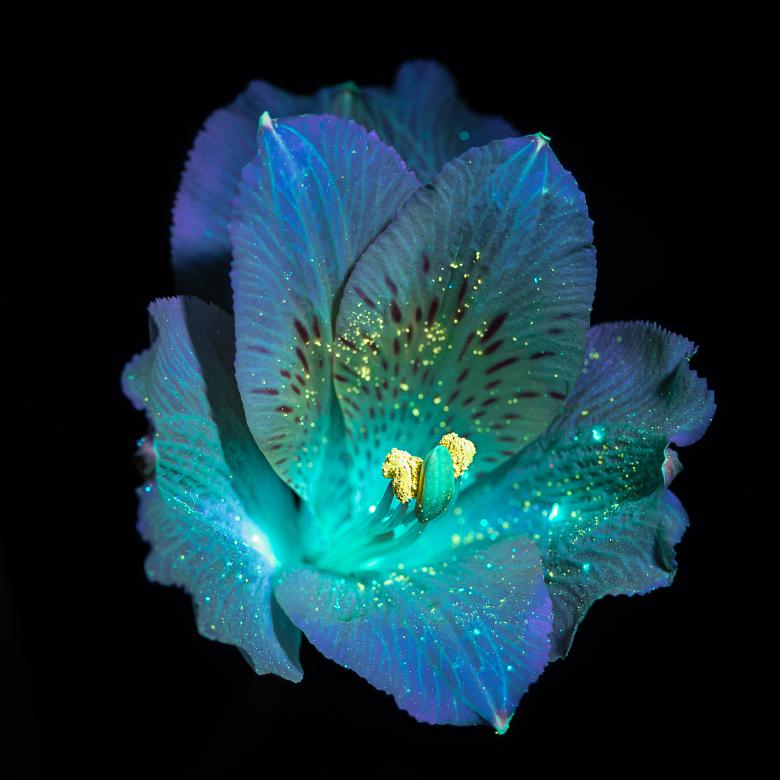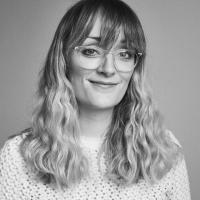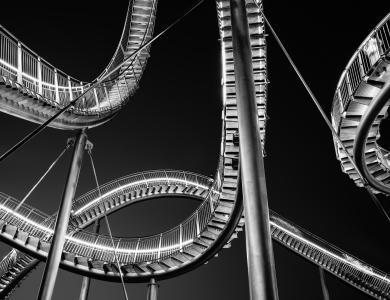
© Debora Lombardi, Italy, Shortlist, Professional competition, Wildlife & Nature, 2022 Sony World Photography Awards
We've been sharing a top photograph from the 2023 Awards on our Instagram each week and explaining why we love it. At the end of every month, we share those weekly pics on our Instagram Stories, asking you to vote (or 'Like') your favourite. August's winner was Debora Lombardi, a photographer shortlisted in our Professional competition. We put the talented photographer in the spotlight...
Your winning photograph is of a Peruvian lily, why did you choose this flower for the series?
This photograph is part of the Between Art and Science series shortlisted at the Sony World Photography Awards and was taken in Italy when we were in lockdown due to the pandemic. At that time I started experimenting with ultraviolet induced visible fluorescence (UVIVF) photography and it soon became my only outlet – the only activity that gave me solace.
I was always looking for interesting subjects to photograph through this technique. When it wasn’t possible to move far away from home due to lockdown, I collected flowers in the communal garden, in the neighboring flowerbeds, as well in the surrounding fields.
I found this Alstroemeria by chance and it was love at first sight. I had never photographed this flower before but its ethereal elegance struck me immediately. Once subjected to UV light, it literally bewitched and fascinated me by the amount of energy it was able to emit.
Can you talk us through the process you used to achieve this image?
Ultraviolet induced visible fluorescence photography (UVIVF) is a technique that captures the fluorescence of objects hit by UV light and makes visible what is generally invisible to the naked eye. Photographing flowers and plants in this way reveals vivid and incandescent colors, a chromatic world not perceived by our eyes, but which some animals (such as bees) can perceive.
I usually photograph at night, in the darkness of my studio, because silence in addition to darkness helps me interact with my flowers. Each of these stunning photos utilises a plain black background to emphasise the striking colouration of flowers. This simple composition is reminiscent of portrait photography. I take my photos in a totally dark environment, illuminating the subject with a UV torch (like those usually used in crime scenes), with shutter speeds ranging from 10 to 30 seconds.
Each shot is different from the other because, pointing at the flower with the UV flashlight, movements are never the same and the effects of light and shadows are different from shot to shot.
You took up photography because...
Photography has always accompanied and enriched my life and my work. As a child I stole my father's Polaroid camera and I wasted the film to make unlikely snapshots that today would be defined as experimental.
I have always had a camera with me because it has always been important to me the need to keep memories and to witness events. Photography has become for me a means of investigation, as well as a way to give voice to alternative visions of reality.
It was during lockdown in March 2020 that photography also becomes my main outlet, giving me the opportunity not to suffer but to transform that time into a creative and experimental period.
Who or what has been the most significant influence on your photography?
One evening, during lockdown, I came across a biologist's blog that illustrated the fascinating phenomenon related to the fluorescence of flowers and plants hit by ultraviolet light.
I immediately thought that it would be interesting to depict this natural phenomenon through photography, and so I started wandering with my imagination while the world was on pause.
At first, I collected plants and flowers from the communal garden (because I wasn’t able to go outside of our residence), and experimented with those that look the strangest and could trigger an idea of the virus in the imagination of those who looked at them.
So this was my first project of ultraviolet-induced visible fluorescence photography Covid-19 UVIVF. Plants and flowers, when solicited by UV light, emit a fluorescence that makes them mysterious, monstrous and fascinating at the same time; it's a bit like seeing the virus under a microscope.
What characteristics do you need to become a photographer?
I have always believed that a photographer is not made but is born. Like any artistic passion, photography develops unconsciously in some of us, and then suddenly appears in particular moments of one's life. It is a set of felt emotions and lived experiences that, for the most fortunate and enlightened, appear in particular and crucial periods of their lives to what has always been inherent in their DNA.
Favourite photographic quote?
"Creative photography must not reproduce but interpret making the invisible visible".
The quote is from Franco Fontana, who is for me one of the best Italian photographers. I chose this quote because it fits perfectly with my thoughts on photography.
Rendering the invisible visible through art, especially during uncertain times. Fear and anxiety triggered by invisible forces are difficult to subdue without making visible the source of torment. And it is often the things we cannot see and cannot understand that inspire the most fear. With my photography, I aim to ease uncertainty by rendering an invisible world of science visible through photographic power. Perhaps with such an imagination, we can find a morsel of peace amidst the unknown.



